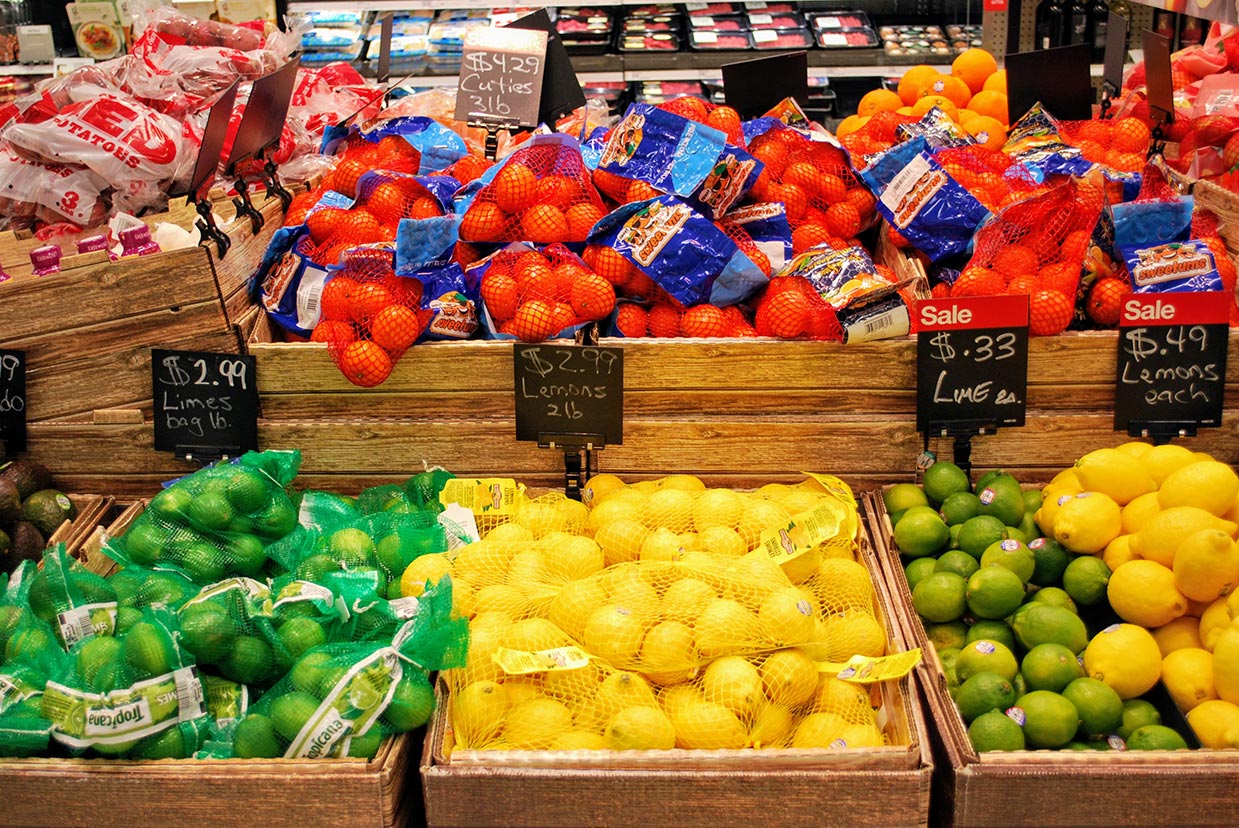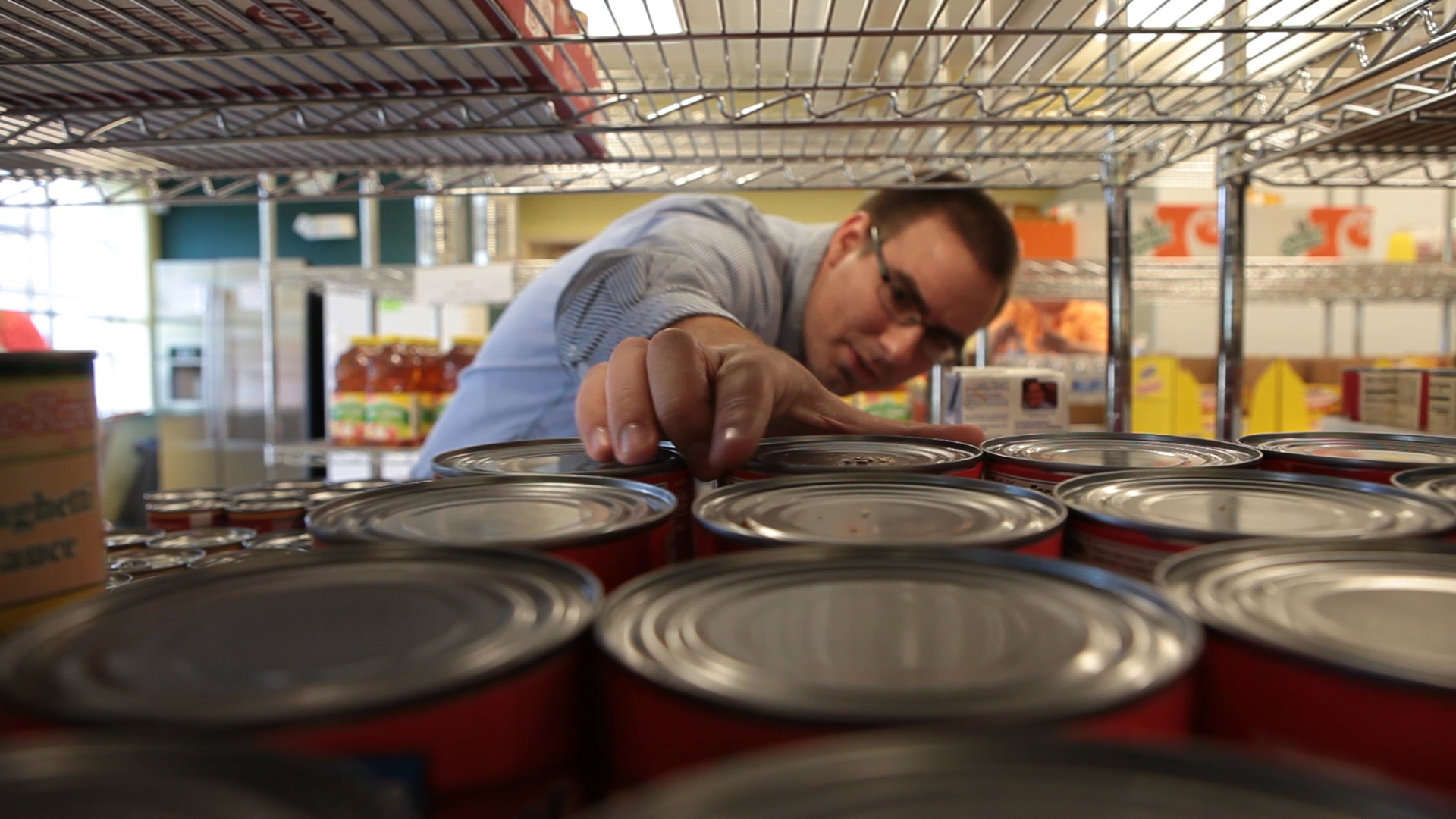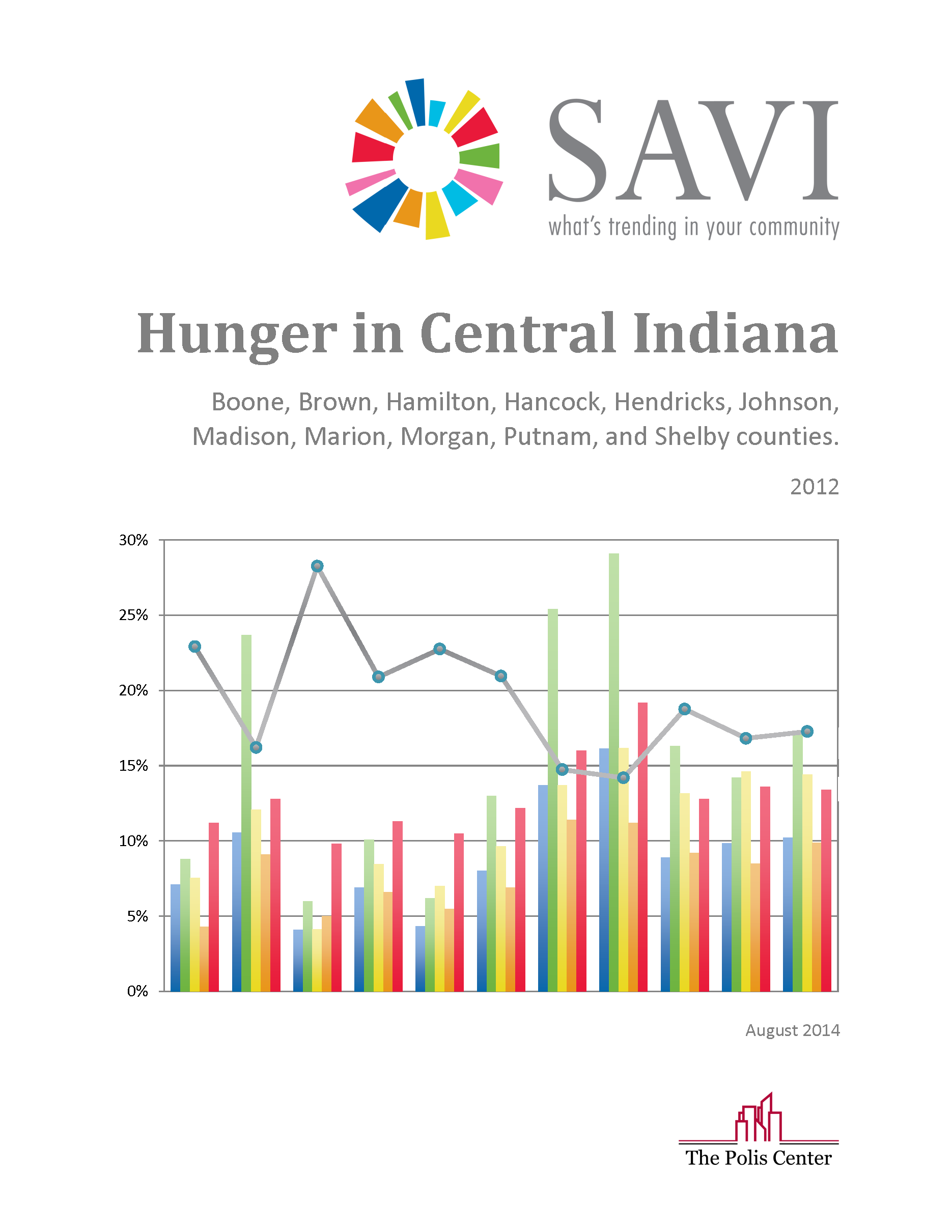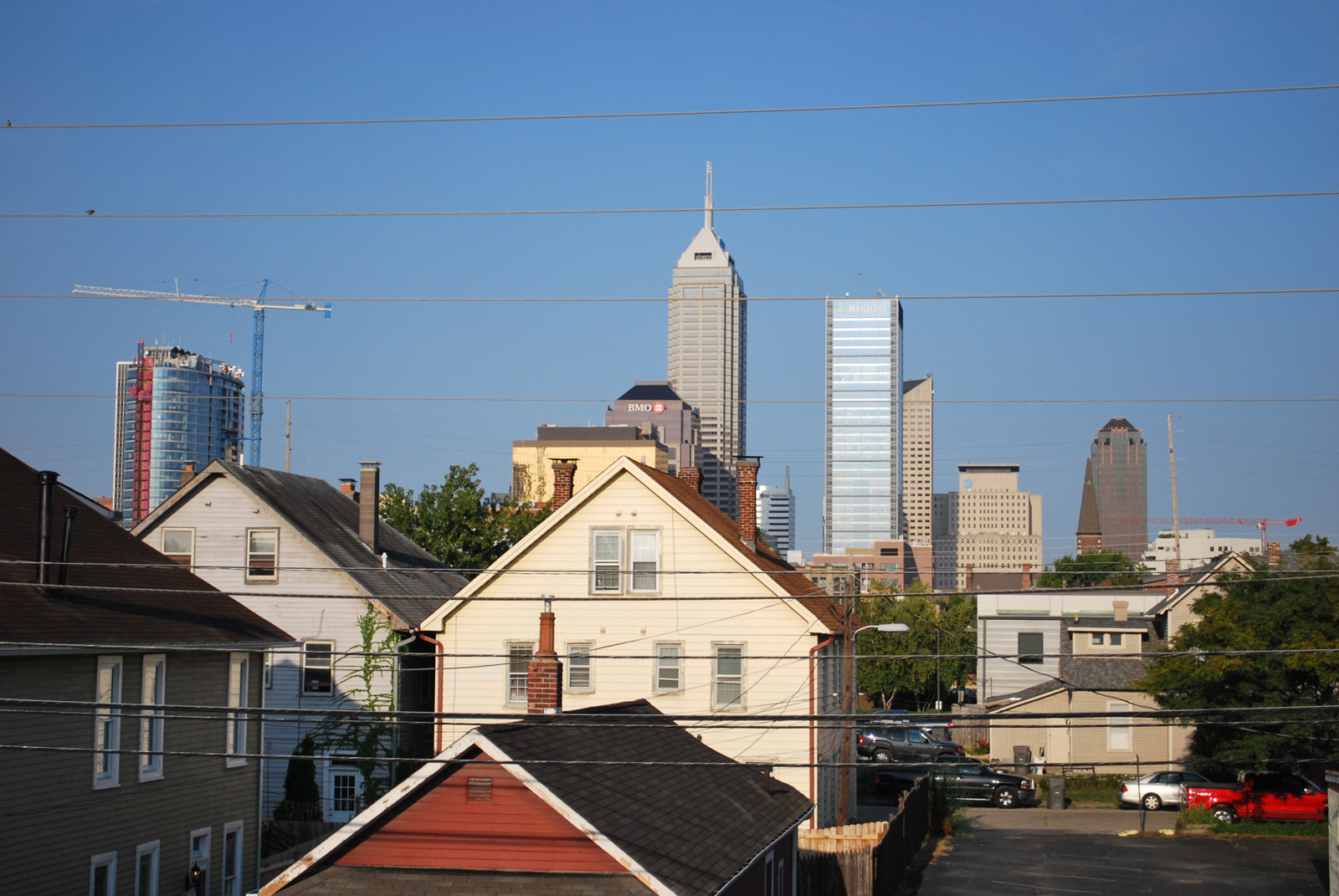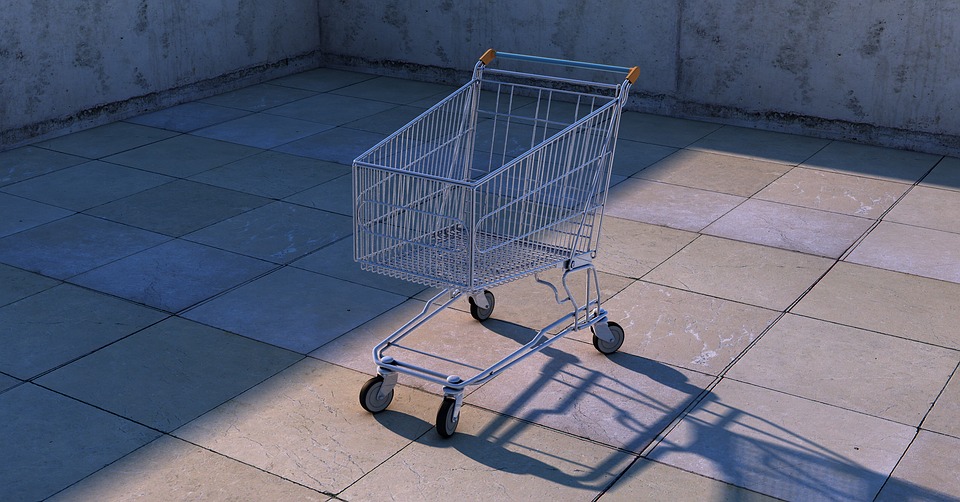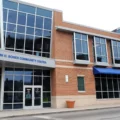As you’re probably aware from recent news reports, Feeding America recently released its annual Map the Meal Gap report, with statistics on the state of hunger across the nation. According to its report, food insecurity (not always knowing where your next meal will come from) is affecting 1 out of every 6 people in the Indy MSA – that’s more than 266,000 people.
What you may NOT know is that more than one-third (35%) of those 266,000 food insecure are not eligible for federal food assistance such as SNAP – the Supplemental Nutrition Assistance Program; WIC – the Special Supplemental Nutrition Program for Women, Infant, and Children; and free and reduced school breakfast and lunch.
When you look at this statistic for the suburbs, it is even more staggering. These are people making too much money to qualify for federal support but not enough to cover unexpected expenses, which is creating times of hardship – and times of hunger. The face of hunger is changing; it is affecting people we wouldn’t expect – our neighbors, the nicely-dressed students at our kids’ school – former middle class. The suburbs are particularly affected with this newly poor population.
54% of the Indy suburban food insecure population is not eligible for federal food assistance.
The following chart illustrates how eight Central Indiana communities compare in terms of the percentage of the food insecure that are not eligible for federal food assistance.
 This makes the local resources especially important. It’s the ONLY support they have.
There are many food providers doing a lot of great work: food banks, food pantries, soup kitchens, schools, CICOA, Meals on Wheels, Gleaner’s Back Sack program, and Summer Servings, just to name a few.
But, there are gaps. So, HOW CAN THEY DO MORE to make sure that everyone who needs it has access to food?
I’ve had the privilege of working with two groups locally that are trying to answer this very question.
1. The Northside Mission Ministry of Second Presbyterian Church, a large congregation in Washington Township, currently offers a food pantry and rent and utility assistance to residents in the township, but it wants to do even more to address hunger.
2. United Way of Central Indiana and Hancock County Regional Hospital just hosted the Hancock County Hunger Summit II where about 35 individuals representing 20 organizations in the county working to address hunger came together to talk about the current state of hunger and develop solutions to fill the gaps.
In both cases, we conducted needs assessments using SAVI to inform the partners about the state of hunger and to identify WHO is being served WHERE, WHEN, and by which organizations. The assessment also identified existing gaps. Here are the common findings:
1. There are gaps in AVAILABILITY – It is difficult for the working poor to access food resources because of the limited hours they are available. Few are open in the evenings and even fewer on the weekend. The map below shows the limited evening availability of food pantries in Washington Township, with the highlighted areas being those in greatest need of food resources.
This makes the local resources especially important. It’s the ONLY support they have.
There are many food providers doing a lot of great work: food banks, food pantries, soup kitchens, schools, CICOA, Meals on Wheels, Gleaner’s Back Sack program, and Summer Servings, just to name a few.
But, there are gaps. So, HOW CAN THEY DO MORE to make sure that everyone who needs it has access to food?
I’ve had the privilege of working with two groups locally that are trying to answer this very question.
1. The Northside Mission Ministry of Second Presbyterian Church, a large congregation in Washington Township, currently offers a food pantry and rent and utility assistance to residents in the township, but it wants to do even more to address hunger.
2. United Way of Central Indiana and Hancock County Regional Hospital just hosted the Hancock County Hunger Summit II where about 35 individuals representing 20 organizations in the county working to address hunger came together to talk about the current state of hunger and develop solutions to fill the gaps.
In both cases, we conducted needs assessments using SAVI to inform the partners about the state of hunger and to identify WHO is being served WHERE, WHEN, and by which organizations. The assessment also identified existing gaps. Here are the common findings:
1. There are gaps in AVAILABILITY – It is difficult for the working poor to access food resources because of the limited hours they are available. Few are open in the evenings and even fewer on the weekend. The map below shows the limited evening availability of food pantries in Washington Township, with the highlighted areas being those in greatest need of food resources.
 2. There are gaps in ACCESSIBILITY– Many of the resources are not accessible to those without reliable transportation. Note that in the map below, a majority of the Hancock County food providers are clustered in the central and northwestern part of the county. With limited public transportation, this makes it difficult for many people outside of these areas to access the food.
2. There are gaps in ACCESSIBILITY– Many of the resources are not accessible to those without reliable transportation. Note that in the map below, a majority of the Hancock County food providers are clustered in the central and northwestern part of the county. With limited public transportation, this makes it difficult for many people outside of these areas to access the food.
 3. There are many underutilized food programs – local food providers report that they have the capacity to serve more. But there also are many people who qualify for federal food programs that are not taking advantage of them.
In Hancock County, only 16% of the eligible students actually utilize the free breakfast program.
4. There is a lack of awareness – of the existing food resources in the community and of 2-1-1 (Connect2Help, an information referral service); there also is a great lack of awareness of the hunger right in our midst.
15% of those surveyed in Central Indiana were aware of the central number for assistance and could correctly recall 2-1-1, the organization and/or number to dial.
5. There are many other needs – Many people coming to the food pantries, soup kitchens, etc. have other needs: transportation, housing, employment, medical help, better nutrition, and fresh foods.
6. There is a lack of coordination between resources– Most of the food providers focus on their mission and work independently.
7. And there are a number of resources in addition to food providers that want to be a part of the solution.
By coordinating their efforts, providers can do more to strategically address the needs in their community through good planning and good data.
Our recent partnership in Washington Township provided an opportunity to develop a network model that utilizes collective impact to mitigate hunger in Central Indiana, and it’s catching on.
3. There are many underutilized food programs – local food providers report that they have the capacity to serve more. But there also are many people who qualify for federal food programs that are not taking advantage of them.
In Hancock County, only 16% of the eligible students actually utilize the free breakfast program.
4. There is a lack of awareness – of the existing food resources in the community and of 2-1-1 (Connect2Help, an information referral service); there also is a great lack of awareness of the hunger right in our midst.
15% of those surveyed in Central Indiana were aware of the central number for assistance and could correctly recall 2-1-1, the organization and/or number to dial.
5. There are many other needs – Many people coming to the food pantries, soup kitchens, etc. have other needs: transportation, housing, employment, medical help, better nutrition, and fresh foods.
6. There is a lack of coordination between resources– Most of the food providers focus on their mission and work independently.
7. And there are a number of resources in addition to food providers that want to be a part of the solution.
By coordinating their efforts, providers can do more to strategically address the needs in their community through good planning and good data.
Our recent partnership in Washington Township provided an opportunity to develop a network model that utilizes collective impact to mitigate hunger in Central Indiana, and it’s catching on.
Who qualifies for federal food assistance? To qualify for SNAP and free school lunch, you must be below 130% poverty. What does this look like? A family of four makes less than $29,965; a family of three makes less than $24,817; and an individual makes less than $14,521. To qualify for WIC and reduced school lunch, you must be below 185% poverty level – a family of four making less than $42,643; a family of three making less than $35,317; and an individual making less than $20,665. (Source: Feeding America, 2012 poverty thresholds)
 This makes the local resources especially important. It’s the ONLY support they have.
There are many food providers doing a lot of great work: food banks, food pantries, soup kitchens, schools, CICOA, Meals on Wheels, Gleaner’s Back Sack program, and Summer Servings, just to name a few.
But, there are gaps. So, HOW CAN THEY DO MORE to make sure that everyone who needs it has access to food?
I’ve had the privilege of working with two groups locally that are trying to answer this very question.
1. The Northside Mission Ministry of Second Presbyterian Church, a large congregation in Washington Township, currently offers a food pantry and rent and utility assistance to residents in the township, but it wants to do even more to address hunger.
2. United Way of Central Indiana and Hancock County Regional Hospital just hosted the Hancock County Hunger Summit II where about 35 individuals representing 20 organizations in the county working to address hunger came together to talk about the current state of hunger and develop solutions to fill the gaps.
In both cases, we conducted needs assessments using SAVI to inform the partners about the state of hunger and to identify WHO is being served WHERE, WHEN, and by which organizations. The assessment also identified existing gaps. Here are the common findings:
1. There are gaps in AVAILABILITY – It is difficult for the working poor to access food resources because of the limited hours they are available. Few are open in the evenings and even fewer on the weekend. The map below shows the limited evening availability of food pantries in Washington Township, with the highlighted areas being those in greatest need of food resources.
This makes the local resources especially important. It’s the ONLY support they have.
There are many food providers doing a lot of great work: food banks, food pantries, soup kitchens, schools, CICOA, Meals on Wheels, Gleaner’s Back Sack program, and Summer Servings, just to name a few.
But, there are gaps. So, HOW CAN THEY DO MORE to make sure that everyone who needs it has access to food?
I’ve had the privilege of working with two groups locally that are trying to answer this very question.
1. The Northside Mission Ministry of Second Presbyterian Church, a large congregation in Washington Township, currently offers a food pantry and rent and utility assistance to residents in the township, but it wants to do even more to address hunger.
2. United Way of Central Indiana and Hancock County Regional Hospital just hosted the Hancock County Hunger Summit II where about 35 individuals representing 20 organizations in the county working to address hunger came together to talk about the current state of hunger and develop solutions to fill the gaps.
In both cases, we conducted needs assessments using SAVI to inform the partners about the state of hunger and to identify WHO is being served WHERE, WHEN, and by which organizations. The assessment also identified existing gaps. Here are the common findings:
1. There are gaps in AVAILABILITY – It is difficult for the working poor to access food resources because of the limited hours they are available. Few are open in the evenings and even fewer on the weekend. The map below shows the limited evening availability of food pantries in Washington Township, with the highlighted areas being those in greatest need of food resources.
 2. There are gaps in ACCESSIBILITY– Many of the resources are not accessible to those without reliable transportation. Note that in the map below, a majority of the Hancock County food providers are clustered in the central and northwestern part of the county. With limited public transportation, this makes it difficult for many people outside of these areas to access the food.
2. There are gaps in ACCESSIBILITY– Many of the resources are not accessible to those without reliable transportation. Note that in the map below, a majority of the Hancock County food providers are clustered in the central and northwestern part of the county. With limited public transportation, this makes it difficult for many people outside of these areas to access the food.
 3. There are many underutilized food programs – local food providers report that they have the capacity to serve more. But there also are many people who qualify for federal food programs that are not taking advantage of them.
In Hancock County, only 16% of the eligible students actually utilize the free breakfast program.
4. There is a lack of awareness – of the existing food resources in the community and of 2-1-1 (Connect2Help, an information referral service); there also is a great lack of awareness of the hunger right in our midst.
15% of those surveyed in Central Indiana were aware of the central number for assistance and could correctly recall 2-1-1, the organization and/or number to dial.
5. There are many other needs – Many people coming to the food pantries, soup kitchens, etc. have other needs: transportation, housing, employment, medical help, better nutrition, and fresh foods.
6. There is a lack of coordination between resources– Most of the food providers focus on their mission and work independently.
7. And there are a number of resources in addition to food providers that want to be a part of the solution.
By coordinating their efforts, providers can do more to strategically address the needs in their community through good planning and good data.
Our recent partnership in Washington Township provided an opportunity to develop a network model that utilizes collective impact to mitigate hunger in Central Indiana, and it’s catching on.
3. There are many underutilized food programs – local food providers report that they have the capacity to serve more. But there also are many people who qualify for federal food programs that are not taking advantage of them.
In Hancock County, only 16% of the eligible students actually utilize the free breakfast program.
4. There is a lack of awareness – of the existing food resources in the community and of 2-1-1 (Connect2Help, an information referral service); there also is a great lack of awareness of the hunger right in our midst.
15% of those surveyed in Central Indiana were aware of the central number for assistance and could correctly recall 2-1-1, the organization and/or number to dial.
5. There are many other needs – Many people coming to the food pantries, soup kitchens, etc. have other needs: transportation, housing, employment, medical help, better nutrition, and fresh foods.
6. There is a lack of coordination between resources– Most of the food providers focus on their mission and work independently.
7. And there are a number of resources in addition to food providers that want to be a part of the solution.
By coordinating their efforts, providers can do more to strategically address the needs in their community through good planning and good data.
Our recent partnership in Washington Township provided an opportunity to develop a network model that utilizes collective impact to mitigate hunger in Central Indiana, and it’s catching on.
Who qualifies for federal food assistance? To qualify for SNAP and free school lunch, you must be below 130% poverty. What does this look like? A family of four makes less than $29,965; a family of three makes less than $24,817; and an individual makes less than $14,521. To qualify for WIC and reduced school lunch, you must be below 185% poverty level – a family of four making less than $42,643; a family of three making less than $35,317; and an individual making less than $20,665. (Source: Feeding America, 2012 poverty thresholds)

